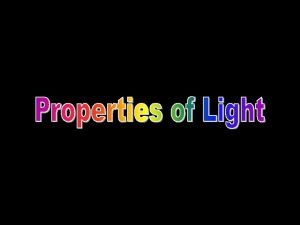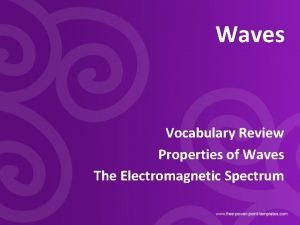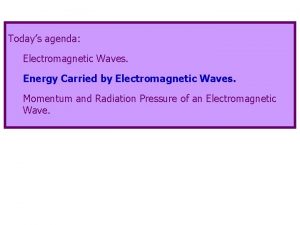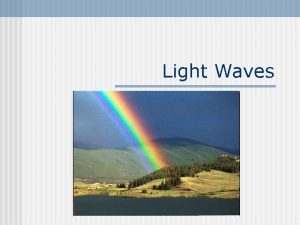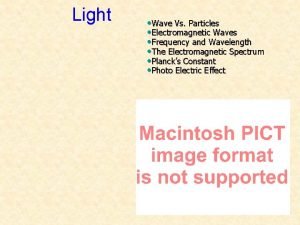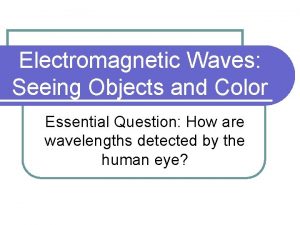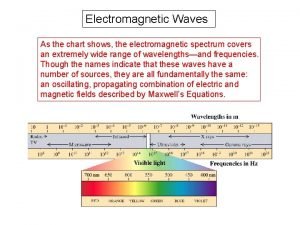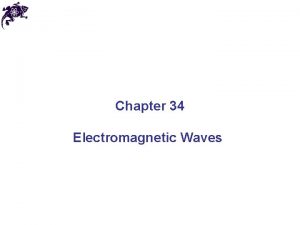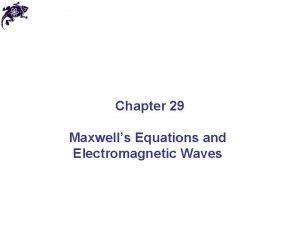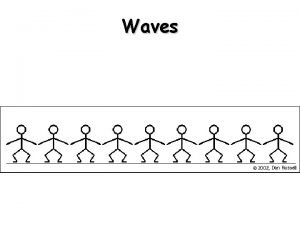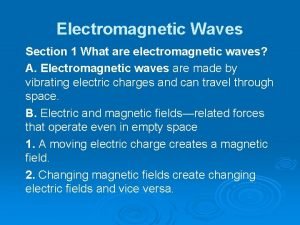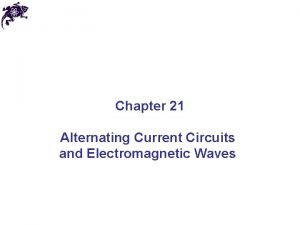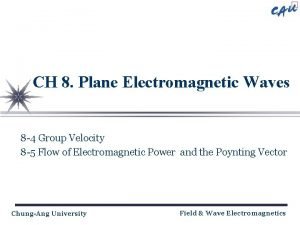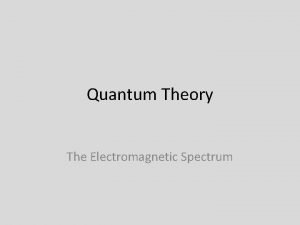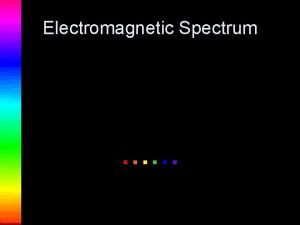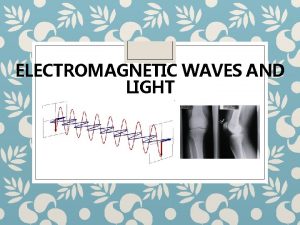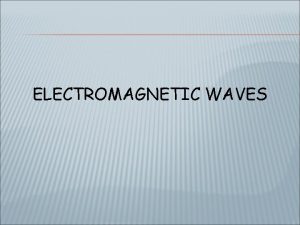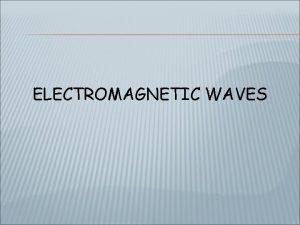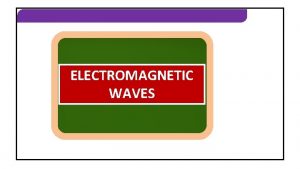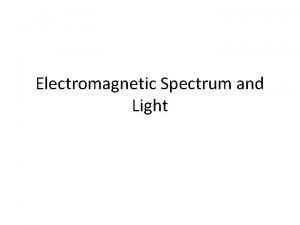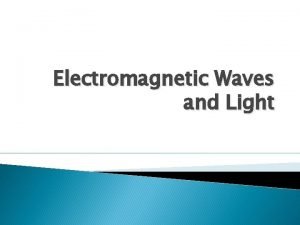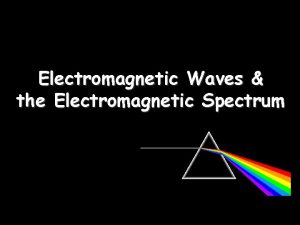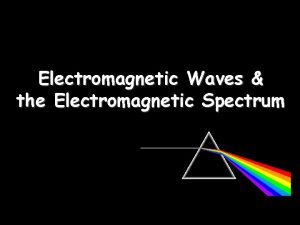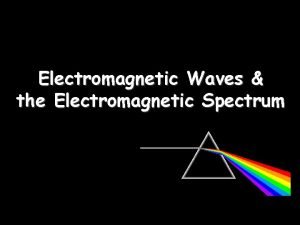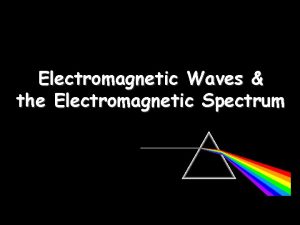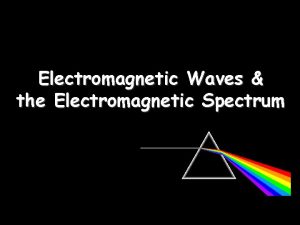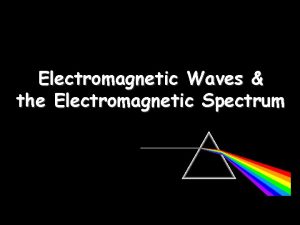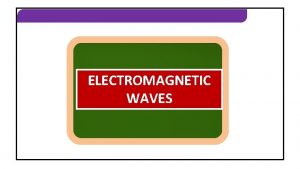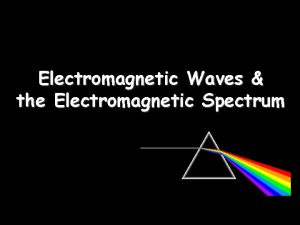LIGHT WAVES Light is an electromagnetic wave Its
























- Slides: 24

LIGHT WAVES

• Light is an electromagnetic wave. • Its motion is transverse. • Light travels in straight lines.

Visible light- the set of light wavelengths that stimulate the retina of the eye. ROY-G-BIV

VISIBLE LIGHT RANGE: Wavelength: 400 nm – 700 nm (1 nm= 1 x 10 -9 m) 4 x 10 -7 m – 7 x 10 -7 m

SPEED OF LIGHT: c=3 X 8 10 m/s This is the same for all electromagnetic waves!!!!

AS WAVE LENGTH INCREASES, FREQUENCY DECREASES. V = fλ where v is always the speed of light. f (Hz) λ (m)

ELECTROMAGNETIC SPECTRUM

Infrared rays- frequency is lower than visible light. Responsible for heating the earths atmosphere. (less then 4. 3 x 1014 Hz) Ultraviolet rays- frequency higher than visible light. Responsible for skin cancer. (greater than 7 x 1014 Hz)

Low frequency High frequency Infrared ROY-G-BIV ultraviolet High λ Low energy Low λ high energy velocity is always 3 x 108 m/s

TERMS Luminous- a body that emits own light.

Illuminated- Body that reflects light.

Transparent- a medium that allows light to travel through it.

Translucent- distorts light.

Opaque- reflects or absorbs light.

PHOTOMETRY The study and measurement of visible light in terms of its perceived brightness to human vision.

SOURCES OF LIGHT Incandescent lightobject gives off light when heated.

• Neon Light – Light produced when electrons in a tube of gas are excited.

Fluorescent light- Ultraviolet rays strike a white powder coating on the inside of the bulb causing it to glow.

• Black light- High frequency visible light (purple) which can cause other objects to fluoresce or glow.

LED- light emitting diode

• Laser light- Light amplification by stimulated emission of radiation

Laser light is monochromatic (one color) and coherent (in phase). This produces a small beam instead of scattered light https: //www. youtube. com/watch? v=UG 85 Vg. LOd. PA

Laser Type Wavelength (nm) Argon fluoride (UV) Krypton fluoride (UV) Xenon chloride (UV) 193 248 308 Nitrogen (UV) Argon (blue) Argon (green) Helium neon (red) Rhodamine 6 G dye (tunable) Ruby (Cr. Al. O 3) (red) Nd: Yag (NIR) Carbon dioxide (FIR) 337 488 514 543 633 570 -650 694 10600

1) Medical Field USES FOR • Correcting vision LASERS • surgery • Correcting skin imperfections 2) Electronics: • CD and DVD players ( and blue ray discs) • Supermarket Scanners • Laser light shows 3) Fiber optics: computers, internet, phones, cable TV- for transferring information and data. 4) Industry: Cutting, blasting, and welding
 Longitudinal vs transverse wave
Longitudinal vs transverse wave Similarities of mechanical and electromagnetic waves
Similarities of mechanical and electromagnetic waves An example for mechanical wave
An example for mechanical wave Difference between electromagnetic and mechanical waves
Difference between electromagnetic and mechanical waves Difference between matter waves and electromagnetic waves
Difference between matter waves and electromagnetic waves Electromagnetic waves vs mechanical waves
Electromagnetic waves vs mechanical waves Mechanical and electromagnetic waves similarities
Mechanical and electromagnetic waves similarities What do all waves transmit
What do all waves transmit Orbital notation for chlorine
Orbital notation for chlorine A health inspector is measuring the intensity of a sound
A health inspector is measuring the intensity of a sound Energy density em wave
Energy density em wave Electromagnetic waves characteristics
Electromagnetic waves characteristics Electromagnetic waves frequency
Electromagnetic waves frequency Electromagnetic waves seeing objects and color
Electromagnetic waves seeing objects and color Electro magnetic spectrum chart
Electro magnetic spectrum chart Electromagnetic waves template
Electromagnetic waves template Electromagnetic waves obey principle of .. *
Electromagnetic waves obey principle of .. * Electromagnetic spectrum equation
Electromagnetic spectrum equation Electromagnetic energy
Electromagnetic energy Radio waves microwaves song
Radio waves microwaves song Section 1 what are electromagnetic waves
Section 1 what are electromagnetic waves Alternating current circuits and electromagnetic waves
Alternating current circuits and electromagnetic waves Power of an electromagnetic wave
Power of an electromagnetic wave Wavelength formulas
Wavelength formulas Electron spectrum
Electron spectrum








